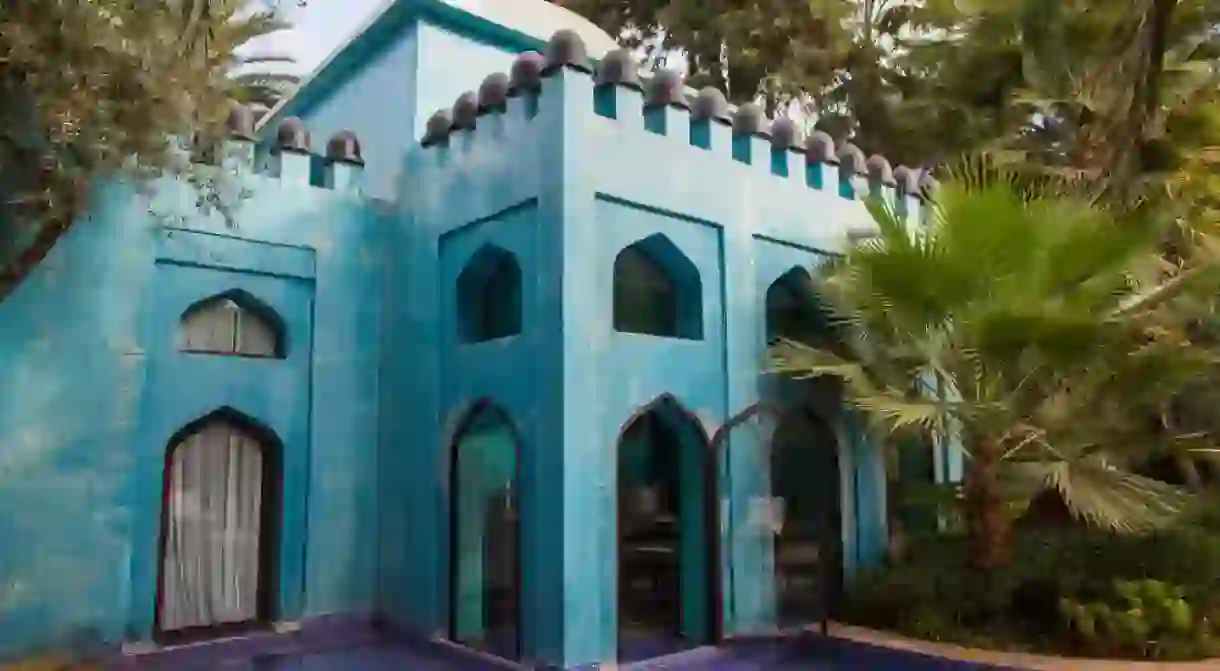The 12 Best Museums in Marrakech

Planning a trip to Morocco’s former imperial capital of Marrakech? While the Red City is famous for its lively souks, the statuesque Koutoubia Mosque, the old medina, and the carnival-like atmosphere of Djemaa el-Fna, there are plenty of great museums to discover too.
Museum of Marrakech
Building, Museum, School

Tiskiwin Museum
Museum

Berber Museum
Building, Museum

Yves Saint Laurent Museum
Museum

Just around the corner from the Majorelle Gardens is a museum dedicated to the man who saved it from the bulldozers, Algerian-born French fashion designer Yves Saint Laurent. The museum is a homage to “YSL”, as he is known, who bought and restored the garden, spending much of his time in the city, along with his partner Pierre Bergé. As a fashion designer, YSL was famed for his combination of comfort and elegance in womenswear, a look that quickly became popular among Europe’s jet set, and a particular favourite with movie star Catherine Deneuve. The museum is housed in a brand-new, specially constructed building with a textured brickwork exterior. It kicks off with a starter exhibition of photographs and artworks before plunging into the main course of fashion design. The main exhibition space features prototypes from some of YSL’s most famous creations. There is also a film about Saint Laurent and his work, as well as temporary exhibitions, a library, bookshop and café. Most visitors combine a visit with the neighbouring Majorelle Gardens. Recommended by Daniel Jacobs.
Musée des Confluences
Museum

The exhibitions at the Musée des Confluences are usually very interesting, but the star of the show is the building itself. The museum’s rather vague title (“Museum of Convergences”) reflects the fact that it doesn’t actually have a specific theme or even a permanent collection, but houses a succession of temporary displays on different subjects. Past exhibitions have included the shared culture of the Abrahamic religions and the magnificence of Marrakech’s palaces. Indeed, of those palaces, this very building is among the most magnificent of all. It was built in the 1920s for the despotic Thami el Glaoui, who was Pasha of Marrakech during the colonial period, and no expense was spared in its construction. Glaoui threw lavish parties here, attended by the likes of Winston Churchill, and the beautiful tile work, stucco and carved cedarwood is among the finest in all Morocco. Not all of the palace is within the museum – part of it houses the local HQ of one of Morocco’s big labor unions – but regardless of what’s on, the museum is well worth a visit just to experience the magnificence of Glaoui’s wonderful palace. Recommended by Daniel Jacobs.
Dar Si Said
Building, Museum

Mouassine Museum
Building, Museum
Maison de la Photographie
Museum of the Palmery
Museum
Observatoire Astronomie
Riad Kniza Collection
Museum
Musée Mohammed VI pour la Civilisation de l'Eau (AMAN)
Museum
The Musée Mohammed VI pour la Civilisation de l’Eau (Mohammed VI Water Museum), named in honour of Morocco’s king, is dedicated to the science and beauty of hydrology. Located out of town in the Palmeraie (oasis palm grove), the museum is large, modern and still largely undiscovered. It is, however, well worth the effort of getting to. Child-friendly, with lots of touch screens, interactive presentations and video displays, the museum illustrates the history of hydraulic engineering in Morocco from the Middle Ages to the present. Indeed, it is a little-known fact that Morocco pioneered irrigation techniques, using water channels from the High Atlas mountains to bring water to all of the city’s ancient orchards, including the Menara and Agdal gardens. There are exhibits on the properties of water, on the hydraulic history of Marrakech and Fez, on the spirituality of water and the rituals associated with it, and on the system of dams built under the reign of the present king’s father, Hassan II. Recommended by Daniel Jacobs.
Trips and Tours in Morocco
Architectural Landmark, Natural Feature

Planning a visit to Marrakech? This magical city is one of many amazing places to visit in Morocco, so consider extending your Moroccan adventure by booking a spot on one of the many multi-day tours in our extensive Morocco collection.












